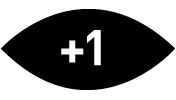

Spectre, the twenty-fourth entry in the James Bond series, picks up where Skyfall, its predecessor, left off, exploring 007's origins while furthering several narrative threads introduced in the last instalment. The movie even manages to fold in subplots and characters from the first two pictures of the Daniel Craig/James Bond era, Casino Royale and Quantum of Solace—an potentially impressive feat given that Skyfall dispensed with much of the groundwork laid in those earlier two films, opting instead to hearken farther back into the series’ fifty-year history. The principal cast members of Skyfall are back for Spectre (even some of the dead ones) as are screenwriters Neal Purvis, Robert Wade, and John Logan, joined on this assignment by Edge of Tomorrow’s Jez Butterworth. Director Sam Mendes overcame some initial reluctance and signed on for a second stint, bringing along such frequent and usually reliable collaborators as the composer Thomas Newman and the production designer Dennis Gassner (though, sadly, not the virtuoso cinematographer Roger Deakins).
But with so many pieces in place for a worthy follow-up to the remarkable Skyfall, the disappointing result is so... disappointing. It’s too much to expect Spectre to top or even equal the singular Skyfall, a fiftieth-anniversary picture that felt neither tired nor stodgy and a contemporary blockbuster sequel that took actual risks with its source material, every one of which paid off beautifully. Spectre, on the contrary, plays it totally safe. But worse, it returns to many of the less admirable aspects of the Bond series. Craig, thankfully, continues to imbue his Bond with gruff humanity, but the events of the narrative are facile and trifling, even when they invoke timely themes like government surveillance and privatization of national security.
The story concerns Bond’s discovery of a shadowy criminal organization called Spectre, headed by the mysterious Franz Oberhauser (Christoph Waltz). Bond shares some history with Oberhauser, which both helps and hinders the mission 007 assigns himself after he’s stripped of his license to kill and ordered not to leave London by his government’s new security regime. Off on his own, Bond enlists the help of several key allies, including his usual colleagues at MI6, who side with him over the bureaucrats now running British Intelligence; a former foe, Quantum of Solace's sinister Mr. White (Jesper Christensen); and White’s daughter Dr. Madeleine Swann (Léa Seydoux). The screenwriters do a decent job resolving contradictory plot elements from movies that were never intended to fit together. But given the chance to properly reinvent SPECTRE and its diabolical leader Ernst Stavro Blofeld for the series’ ostensible future, I'm afraid they blew it.
As it appears in Bond creator Ian Fleming’s novel Thunderball, SPECTRE (the Special Executive for Counter-intelligence, Terrorism, Revenge and Extortion) is a criminal syndicate of evildoers who become fabulously rich by blackmailing superpowers and pitting them against each other. Fleming featured the organization in just three stories, but the original Bond producers wove it into several of 007’s cinematic adventures. The clandestine cartel fit right in with the playful, outlandish tone of those Cold War period fantasies, but in the series’ current incarnation, which strives for a darker tone and a more mature and grounded authenticity, the new Spectre (apparently no longer an acronym) seems hackneyed. A highlight of 1965’s Thunderball was seeing SPECTRE's fantastically wicked but businesslike membership at their annual meeting where they discuss their dastardly agenda. Many variations on this ominous conclave appear in later films, to similarly entertaining effect. By now though, like chases with tricked out gadget cars and impossibly skilful feats of marksmanship, scenes like this one have become extremely difficult to make fresh or cogent. When Bond sneaks into Spectre’s secret convocation in the new film, it looks like an imitation of the ultra-elite sex orgy society in Stanley Kubrick’s Eyes Wide Shut—a sequence that itself waffled between foreboding and goofy.
In Skyfall, Mendes and the writers made old conventions feel fresh and surprising, but here they feel like empty clichés. The ticking clocks, menacing henchmen, and narrow escapes instil no fear or tension in the audience. The villain’s lair, where Bond and Oberhauser come face to face, isn’t even all that special when compared to the hideouts in the last two movies. For that matter, the showdown with this archest of supervillains pales in comparison to the inspired faceoff between 007 and Javier Bardem’s Raoul Silva in Skyfall. We get a torture scene that's unforgivably superfluous, especially when contrasted to the brutal and debilitating interrogation Bond underwent in Casino Royale, an ordeal that was disturbing and traumatic for both 007 and viewers. But the torture in Spectre is toothless and caricatured, and Bond survives it without any apparent psychological damage. It’s all too silly and bland to be consequential.
Casting the two-time Oscar-winning Tarantino villain Christoph Waltz as the fiendish Oberhauser was a smart move, but he can’t make up for the week script. In Skyfall, the writers invented just the right amount of backstory for Bond and the other characters, but here all the psychoanalytical talk about childhood motivations and intractable behaviors feels forced and simplistic. In order to maintain Oberhauser's air of mystery, his screen time is fairly limited. This elusiveness wouldn’t be a problem at all if the filmmakers had concocted a potent secondary villain. But Max Denbigh (Andrew Scott), the politically connected twerp heading up the Joint Intelligence Service that aims to absorb MI6 and decommission the double-0 agents, is a two-dimensional straw man. He's the weakest part of a picture that desperately needs a credible and threatening presence in his place, for the sake of drama as well as contemporary thematic resonance.
The film isn't a total washout. It’s the first of the Daniel Craig movies to open with the signature gun-barrel graphic, an immediate signal that the character and series have returned from the existential limbo they've inhabited since the end of Casino Royale. The opening sequence takes place in Mexico during the Day of the Dead celebration, and it's superbly staged. Mendes’ and cinematographer Hoyte van Hoytema (Interstellar, Tinker Tailor Soldier Spy, Let the Right One In) swoop their camera down from the sky to reveal Bond wearing a traditional skull mask and walking calmly through a crowded parade. We follow him for an elaborate four-minute shot that ranges from intimate close-ups to soaring bird’s eye views. Extended takes like this are more common and less jaw-dropping in the modern world of digital filmmaking than they were in the days of Orson Welles’ Touch of Evil or Martin Scorsese’s Goodfellas, but it’s still a great way to start a movie and hook an audience. (Mendes would make an entire movie this way two years later with 1917.) The pre-credit sequence that follows the bravura one-shot intro follows takes place in a helicopter, and while it isn't as well-conceived or nimbly edited as Skyfall’s chase through Istanbul on foot, motorcycle, and train, it does the job—which is more than I can say for the abysmal title song that follows, a Sam Smith abomination that's especially dreadful when stacked up against Adele’s triumphant “Skyfall.”
The prior film did a great job of introducing us to the MI6 staff, played by Naomie Harris, Ben Whishaw, Rory Kinnear, and Ralph Fiennes. These characters get plenty of screen time again here, and they make the most of it. I was happy to see that Bond and Moneypenny still share a platonic and robust camaraderie, but although the film’s other prominent female characters work well enough, they aren't strong women of the sort we've seen in Craig’s previous outings, like Casino Royale's Vesper Lynn or Quantum of Solace's Camille Montes (or, for that matter, Skyfall’s M). Monica Bellucci (Malèna, Irréversible, The Passion of the Christ), who is 51, got a lot of press for being the oldest “Bond girl” to appear in the series, but her Lucia Sciarra is a negligible role, and the character is indistinguishable from the countless disposable females 007 has bedded in return for information since the Roger Moore years. As Dr Swann, Léa Seydoux (Belle Épine, Midnight in Paris, Blue Is the Warmest Colour) is a more substantial presence who's woven more skillfully into the plot, but ultimately she's reduced to a damsel in distress.
We've seen far stronger female leads in recent action pictures like Edge of Tomorrow, Mad Max: Fury Road, and Mission: Impossible—Rogue Nation. Each of those films bests Spectre on multiple levels and it’s depressing when a Mission Impossible movie tops the same year’s James Bond release, especially since Rogue Nation wasn’t that great to begin with. Still, if this really is Craig’s final appearance in the role, he's had a decent run. The James Bond series endures, but unlike its central character, it's far from invincible.







